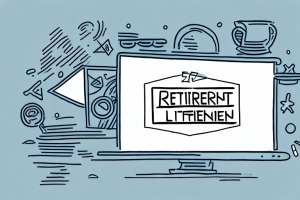Understanding the Financial Landscape in Retirement
As retirement approaches, many individuals are left wondering if they can live comfortably on a $30,000 annual income. To answer this question, it is crucial to have a deep understanding of the financial landscape in retirement. Retirement brings a significant shift in income sources, expenses, and financial priorities, making it essential to evaluate the feasibility of such a budget.
One key aspect of the financial landscape in retirement is the change in income sources. While individuals may have relied on a steady paycheck during their working years, retirement often involves a combination of income streams such as pensions, Social Security benefits, and investment returns. Understanding how these different sources of income work and how they can be maximized is essential for financial planning in retirement.
Evaluating the Feasibility of Living on $30,000 a Year
Living on $30,000 a year in retirement requires a thorough evaluation of one’s financial situation. It’s crucial to consider factors such as existing savings, investments, and debt obligations. Additionally, assessing income sources, including traditional retirement accounts, social security benefits, and potential part-time work, is vital in determining the feasibility of adhering to a $30,000 annual budget.
Furthermore, it is important to take into account the cost of living in the desired location. Different regions and cities have varying expenses for housing, healthcare, groceries, and transportation. Researching and comparing these costs can help in making an informed decision about the feasibility of living on $30,000 a year.
Assessing Your Expenses and Budgeting for Retirement
Before embarking on retirement, it’s essential to assess your expenses and develop a comprehensive budget. This process involves evaluating both essential and discretionary expenses. Basic necessities such as housing, healthcare, food, and utilities must be factored into the budget, along with leisure activities, entertainment, and travel, which contribute to a fulfilling retirement lifestyle.
Additionally, it is important to consider unexpected expenses that may arise during retirement. These can include medical emergencies, home repairs, or changes in financial circumstances. By setting aside a contingency fund in your budget, you can be better prepared to handle these unforeseen costs without jeopardizing your overall retirement plan.
Exploring the Cost of Basic Necessities in Retirement
Understanding the cost of basic necessities is crucial for those contemplating a $30,000 annual budget in retirement. Housing expenses, which may include mortgage payments, property taxes, and maintenance, significantly impact one’s budget. Additionally, healthcare costs, including insurance premiums, medications, and potential long-term care, should be carefully considered to ensure financial stability throughout retirement.
Another important factor to consider when budgeting for retirement is transportation expenses. As retirees may no longer have a daily commute to work, they may assume that their transportation costs will decrease. However, it is essential to account for other transportation needs, such as visits to family and friends, medical appointments, and leisure activities. These expenses may include fuel costs, vehicle maintenance, public transportation fares, or even the occasional rental car.
Factoring in Healthcare Costs and Insurance Coverage
Healthcare costs often constitute a significant portion of retirement expenses. As individuals age, medical needs tend to increase, making it essential to account for healthcare costs and insurance coverage in retirement planning. Evaluating options such as Medicare, supplemental insurance, and potential out-of-pocket expenses will help ensure comprehensive coverage while managing a $30,000 annual budget.
It is important to note that healthcare costs can vary greatly depending on individual circumstances and medical conditions. Factors such as pre-existing conditions, prescription medication needs, and long-term care requirements can significantly impact retirement healthcare expenses. Therefore, it is crucial to carefully assess and estimate these potential costs when planning for retirement.
Analyzing Housing Options on a $30,000 Annual Budget
One of the critical considerations in retirement planning with a $30,000 annual budget is housing. Exploring various housing options, such as downsizing, relocating, or renting, can help individuals make informed decisions. It is crucial to assess both the financial implications and lifestyle factors associated with each choice to strike a balance that meets personal needs and budgetary constraints.
Downsizing is a popular housing option for retirees on a $30,000 annual budget. By moving to a smaller home or apartment, individuals can significantly reduce their housing expenses. This can free up more money for other retirement expenses, such as healthcare or leisure activities. Additionally, downsizing often comes with the added benefit of lower maintenance and utility costs, making it an attractive choice for those looking to simplify their lives.
Another housing option to consider is relocating to a more affordable area. Depending on the location, housing costs can vary significantly. By moving to an area with a lower cost of living, retirees can stretch their budget further and potentially enjoy a higher quality of life. However, it is essential to research and consider other factors, such as access to healthcare, amenities, and proximity to family and friends, before making a decision to relocate.
Making Decisions on Transportation and Travel Expenses
Transportation and travel expenses play a significant role in retirement planning. Individuals need to determine whether owning a vehicle or relying on public transportation aligns with their budgetary constraints. Additionally, considering the cost of fuel, maintenance, and periodic travel for leisure purposes should be factored into the overall financial plan to ensure a comfortable retired life on a $30,000 annual income.
When deciding on transportation and travel expenses, it is also important to consider the environmental impact. Owning a vehicle contributes to carbon emissions and air pollution, while using public transportation can help reduce these negative effects. By opting for public transportation or carpooling, retirees can contribute to a more sustainable future while also potentially saving on fuel and maintenance costs. Additionally, exploring alternative modes of transportation such as biking or walking for shorter distances can not only save money but also promote a healthier lifestyle in retirement.
Managing Debt and Financial Obligations in Retirement
Entering retirement with existing debt can complicate financial planning. It is essential to evaluate and manage debt obligations while planning to live on a $30,000 annual income. Creating a repayment strategy and exploring options like debt consolidation or refinancing can help minimize the impact of debt on retirement savings and improve financial stability throughout the golden years.
One important aspect of managing debt in retirement is prioritizing which debts to pay off first. It is advisable to focus on high-interest debts, such as credit card balances, as they can quickly accumulate and become a significant burden on limited retirement income. By paying off high-interest debts first, retirees can save money on interest payments and free up more funds for other essential expenses.
Additionally, retirees should consider seeking professional financial advice to help navigate their debt management journey. Financial advisors can provide personalized guidance and recommend strategies tailored to individual circumstances. They can also assist in negotiating with creditors, exploring debt relief options, and creating a realistic budget that aligns with retirement income.
Maximizing Social Security Benefits and Other Sources of Income
Maximizing social security benefits and exploring additional income sources can significantly impact one’s ability to live comfortably on a $30,000 annual income. Understanding the rules and regulations surrounding social security and considering options like part-time work, freelancing, or passive income streams can provide a financial cushion and improve the quality of life in retirement.
Creating a Sustainable Retirement Income Strategy
Developing a sustainable retirement income strategy is crucial for individuals on a $30,000 annual budget. It involves integrating various income sources, managing investments, and considering tax implications. Crafting a diversified strategy that balances risk and return will help ensure a steady cash flow and financial resilience in the face of economic challenges.
Exploring Part-Time Job Opportunities for Supplemental Income
Part-time job opportunities can serve as a valuable source of supplemental income in retirement. Exploring options such as consultancy work, seasonal employment, or pursuing hobbies that generate income can provide financial flexibility and contribute to a sense of fulfillment during the golden years. Integrating part-time work into the overall retirement income strategy is a smart move for those considering a $30,000 annual budget.
Identifying Cost-Saving Strategies to Stretch Your Budget
Living on a $30,000 annual income in retirement requires a keen eye for cost-saving strategies. Identifying areas where expenses can be minimized, such as grocery shopping, energy usage, or entertainment, can significantly impact one’s overall budget. Embracing frugal habits while maintaining a fulfilling lifestyle is key to ensuring financial stability and making the most of limited resources.
Understanding the Impact of Inflation on Your Retirement Income
Considering the long-term impact of inflation is vital for individuals planning to live on a $30,000 annual income in retirement. As the cost of living rises over time, the purchasing power of each dollar decreases. Incorporating inflation protection mechanisms into the retirement income strategy, such as investing in assets that outpace inflation or annuity products, can safeguard against the erosion of purchasing power.
Balancing Leisure Activities and Entertainment Costs in Retirement
Retirement is a time to enjoy leisure activities and pursue personal interests. However, doing so on a $30,000 annual budget requires careful planning and budgeting. Prioritizing activities, exploring low-cost alternatives, and taking advantage of senior discounts are effective ways to strike a balance between leisure and budgetary limitations, allowing individuals to maintain an active and fulfilling retirement lifestyle.
Evaluating the Pros and Cons of Downsizing or Relocating in Retirement
Downsizing or relocating can offer financial benefits for individuals on a $30,000 annual income in retirement. By reducing housing expenses or moving to a lower-cost area, individuals can stretch their budget further. However, there are numerous factors to consider, including proximity to family and friends, access to healthcare, and the potential impact on overall quality of life. Carefully evaluating the pros and cons will help make an informed decision that aligns with one’s goals and financial circumstances.
Planning for Unexpected Expenses and Emergencies in Retirement
Preparing for unexpected expenses and emergencies is crucial regardless of one’s annual income in retirement. Creating an emergency fund and having adequate insurance coverage can provide a safety net and prevent financial stress in challenging times. Allocating a portion of the $30,000 annual budget towards savings and insurance premiums will help mitigate the impact of unexpected events on long-term financial stability.
Seeking Financial Advice and Guidance for Successful Retirement Planning
Navigating the complexities of retirement planning, especially on a limited budget, can be overwhelming. Seeking advice from financial professionals can provide invaluable guidance on creating a solid retirement plan. They can analyze individual circumstances, identify potential pitfalls, and offer strategies to optimize financial resources, empowering individuals to confidently manage a $30,000 annual income in retirement.
Tips for Living Comfortably on a $30,000 Annual Income
Living comfortably on a $30,000 annual income in retirement requires adopting certain strategies and habits. Optimizing expenses by comparison shopping, leveraging community resources, and adhering to a budget are essential. Additionally, maintaining good health, prioritizing relationships, and nurturing personal fulfillment through low-cost or free activities contribute to overall well-being and contentment in retirement.
Case Studies: Real-life Examples of Individuals Thriving on a $30,000 Yearly Budget
Examining real-life case studies of individuals who successfully live on a $30,000 annual budget in retirement can provide valuable insights and inspiration. These stories offer practical examples and showcase various strategies employed to make the most of limited financial resources. By understanding the experiences of others, individuals can gain confidence in their ability to live comfortably within their means in retirement.
In conclusion, living on a $30,000 annual income in retirement is indeed possible with careful planning, budgeting, and a comprehensive understanding of financial considerations. By evaluating expenses, exploring income sources, and implementing cost-saving strategies, individuals can navigate the financial landscape in retirement and enjoy a fulfilling and financially secure golden phase of life.



